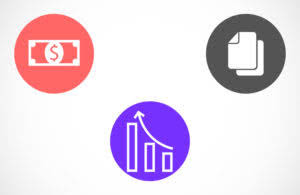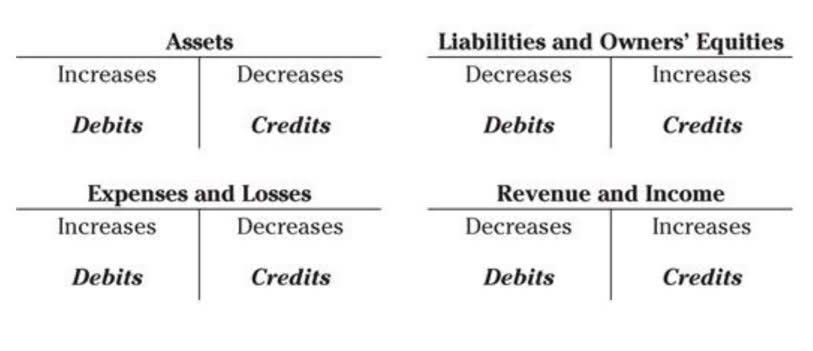
If an entry has not been recorded, the item will appear on the reconciliation. If you’re searching for accounting software that’s user-friendly, full of smart features, and scales with your business, Quickbooks is a great option. This is an important fact because it brings out the status of the bank reconciliation statement. Some businesses, which have money entering and leaving their accounts multiple times every day, will reconcile on a daily basis.
- You need to determine the underlying reasons responsible for any mismatch between balance as per cash book and passbook before you record such changes in your books of accounts.
- Finance teams gain valuable time back, allowing them to focus on strategic work rather than transactional details.
- Enter the bank information and go back to this as you verify the amounts in Sage 100.
- Taking the time to perform a bank reconciliation can help you manage your finances and keep accurate records.
- It also missed two $25 fees for service charges and non-sufficient funds (NSF) checks during the month.
- This relatively straightforward and quick process provides a clear picture of your financial health.
Adjusting the Bank Statement Balance
- This can include monthly charges or charges from overdrawing your account.
- Conducting regular bank reconciliation helps you catch any fraud risks or financial errors before they become a larger problem.
- For example, you wrote a check for $32, but you recorded it as $23 in your accounting software.
- Note that this process is exclusively for reconciliations performed by hand.
- The first entry records a debit to the cash account and a credit to the bank reconciliation account.
The four basic steps involved in the bank reconciliation process are described below. Search the bank statement for any interest your account earned during the month, then add it to your reconciliation statement. Also, deduct any penalties or fees the bank assessed that your ledger doesn’t list. When you’re performing bank reconciliation, you’re basically following the same process as balancing a checkbook—you’re just doing it on a business-wide scale instead of a personal one. Bank reconciliation also helps you identify fraud or theft and intervene early.
Compare the Deposits

If you’ve been charged a fee in error, contact your bank to resolve the issue. There will be very few bank-only transactions to be aware of, and they’re often grouped together at the bottom of your bank statement. However, sometimes there are differences between the two https://www.bookstime.com/ balances and so you’ll need to identify the underlying reasons for such differences. After adjusting all the above items what you’ll get is the adjusted balance of the cash book. However, there can be situations where your business has overdrafts at the bank, which is when a bank account goes into the negative as a result of excess withdrawals. Not-sufficient funds (NSF) refers to a situation when your bank does not honour a check, because the current account, on which the check is drawn, has insufficient funds.

What is a bank reconciliation statement?
- When there are no unexplained differences, accountants state that the bank statement has been reconciled.
- It’s vital businesses know what type of reconciliation to use and the bank reconciliation process flow in order to be as efficient as possible and support long-term financial stability.
- Thankfully, specialized accounting software can streamline this aspect of financial reporting, thus allowing finance teams to ensure that all transactions recorded by the business and banks are accounted for.
- All of your bank and credit card transactions automatically sync to QuickBooks to help you seamlessly track your income & expenses.
- One of the most impactful benefits of Copilot Bank Reconciliation is its ability to automate the matching process, instantly aligning bank statements with ledger entries.
Using this simple process each month will help you uncover any differences between your records and what shows up on your bank statement. Remember that transactions that aren’t accounted for in your bank statement won’t be as obvious as bank-only transactions. This is where your accounting software can help you reconcile and keep track of outstanding checks and deposits.

These debits made by the bank directly from your bank account will lead to a difference between balances. This income statement means that the company’s bank balance is greater than the balance reflected in the cash book. Bankrate.com is an independent, advertising-supported publisher and comparison service. We are compensated in exchange for placement of sponsored products and services, or by you clicking on certain links posted on our site. Therefore, this compensation may impact how, where and in what order products appear within listing categories, except where prohibited by law for our mortgage, home equity and other home lending products. Other factors, such as our own proprietary website rules and whether a product is offered in your area or at your self-selected credit score range, can also impact how and where products appear on this site.
- If you have access to Excel, it is helpful to create a template such as this.
- An outstanding check refers to a check payment that has been recorded in the books of accounts of the issuing company, but has not yet been cleared by the bank as a deduction from the company’s cash balance.
- Many companies produce bank reconciliation statements regularly to ensure they’ve recorded all their banking transactions properly and that their ending balance matches the amount the bank says it has.
- The bank reconciliation statement explains the difference between the balance in the company’s records and the balance in the bank’s records.
- The debit balance as per the cash book refers to the deposits held in the bank, and is the credit balance as per the passbook.
Check your ledger’s recorded deposits, withdrawals and cleared checks against those listed on the bank statement. Everything listed on the bank statement should be included bank reconciliation in your records and vice versa. For one thing, it helps you catch financial mistakes before they become bigger problems. For example, if you entered a check amount into your general ledger but forgot to physically cash that check, you’ll discover the error during the bank account reconciliation process.